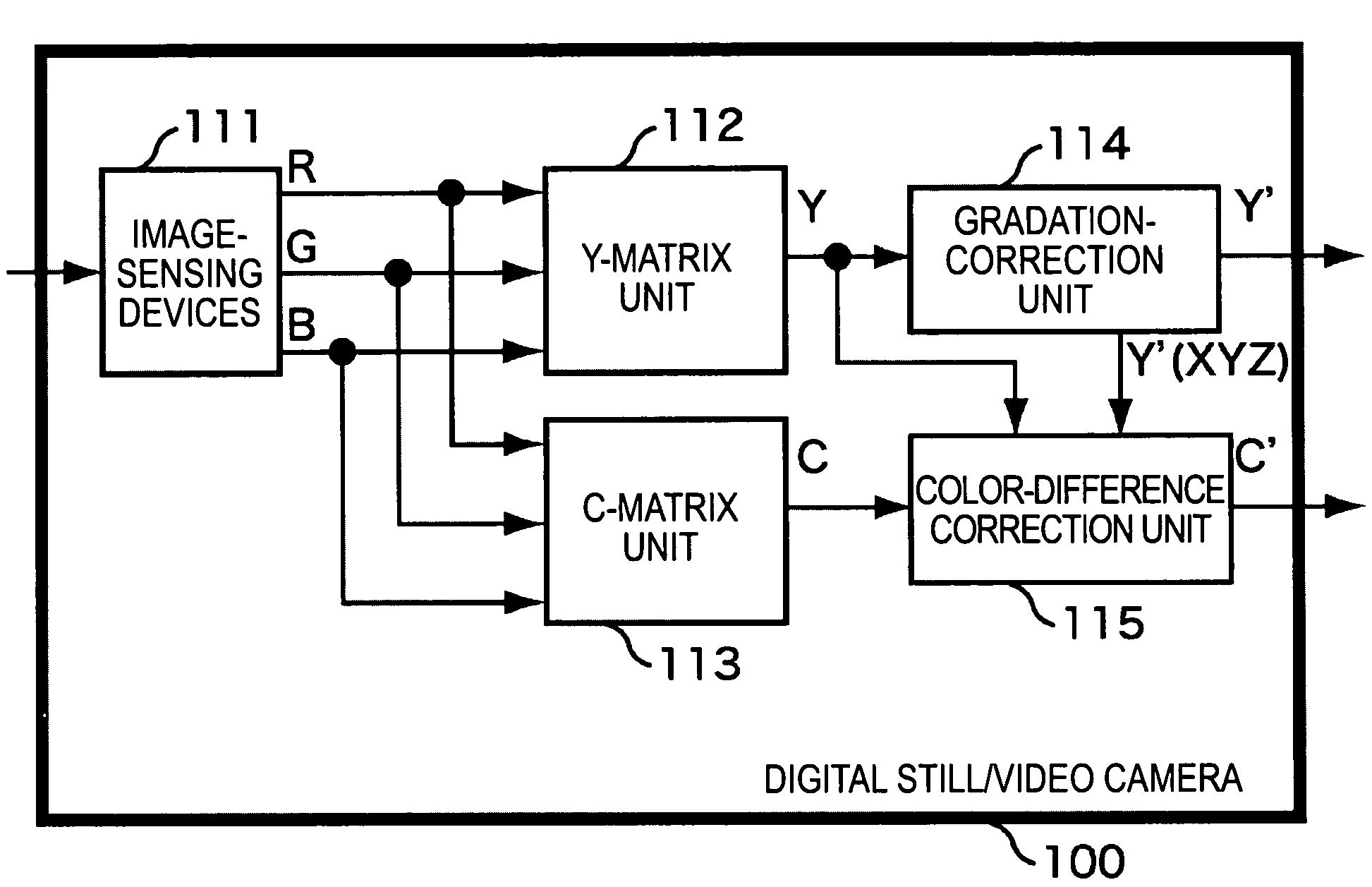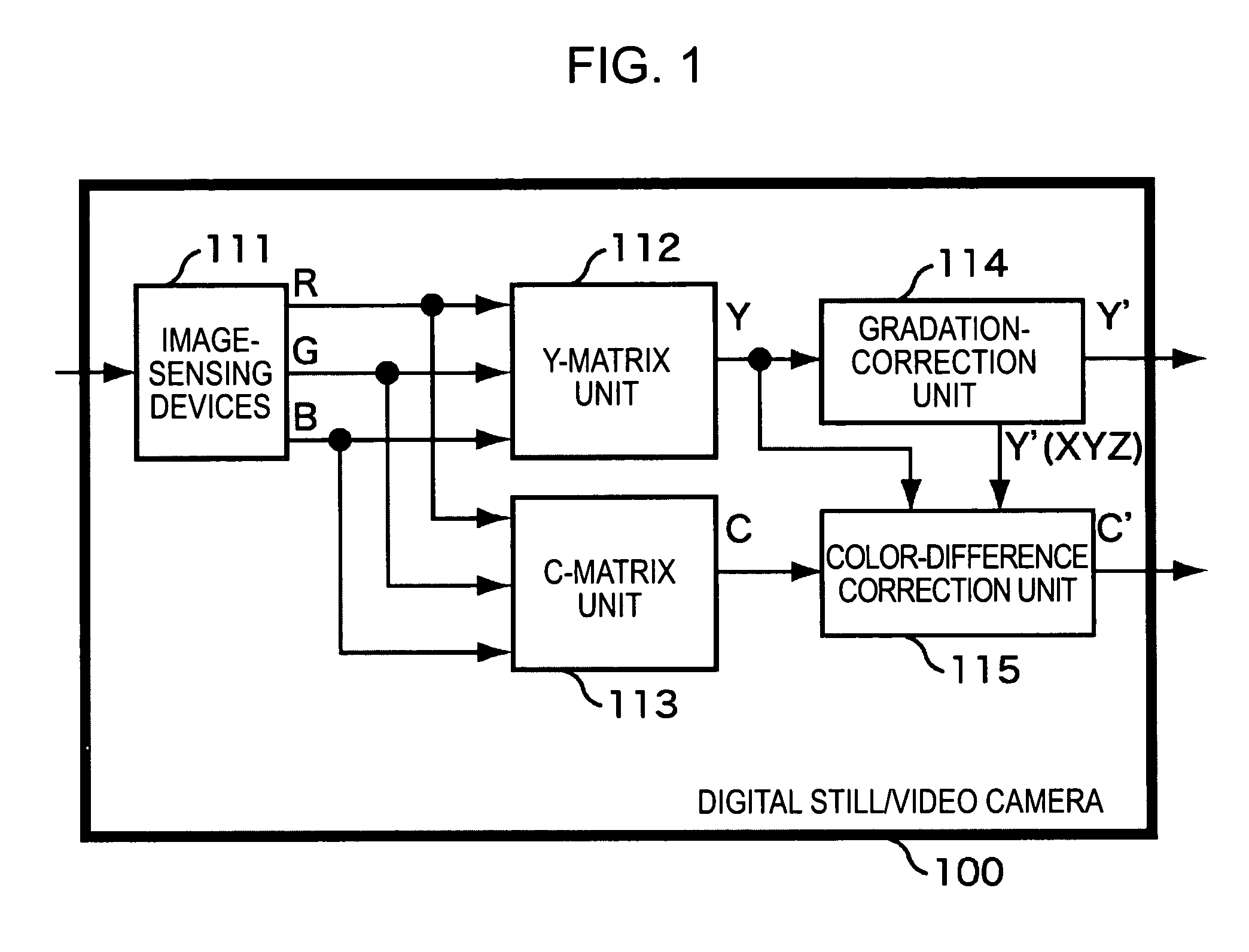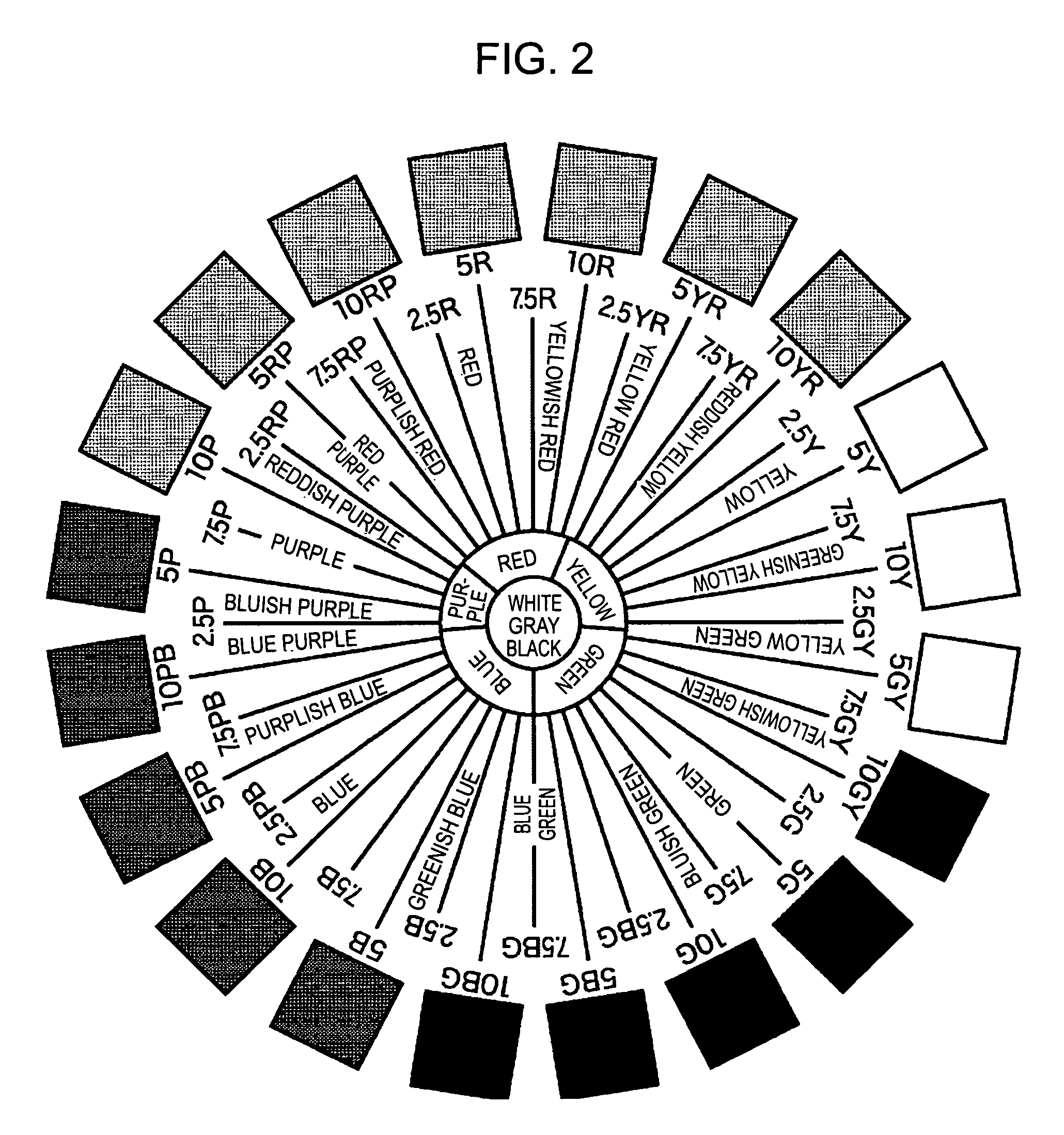Image processing device method and program
a technology of image processing and image level, applied in the field of image processing device method and program, can solve the problem of color-difference signal level disadvantageously reaching saturation poin
- Summary
- Abstract
- Description
- Claims
- Application Information
AI Technical Summary
Benefits of technology
Problems solved by technology
Method used
Image
Examples
Embodiment Construction
[0039]FIG. 1 is a view illustrating the structure of a main part of a typical video camera, for example, a digital still / video camera 100, to which the present invention is applied.
[0040]Image-sensing devices 111 are composed of, for example, charge coupled devices (CCDs) and complementary metal-oxide semiconductor (CMOS) devices. The image-sensing devices 111 capture an optical image from a subject as image signals and generate three-primary-color signals of R, G, and B from these image signals. A Y-matrix unit 112 performs matrix calculation on these R, G, and B signals to calculate the Y signals (the luminance components). A C-matrix unit 113 performs matrix calculation on the three-element signals of R, G, and B to calculate the C signals (the color-difference components). These C signals (the color-difference components) are composed of Cr and Cb color-difference signals.
[0041]The Y signals (the luminance components) calculated by the Y-matrix unit 112 are input to a gradation-...
PUM
 Login to View More
Login to View More Abstract
Description
Claims
Application Information
 Login to View More
Login to View More - R&D
- Intellectual Property
- Life Sciences
- Materials
- Tech Scout
- Unparalleled Data Quality
- Higher Quality Content
- 60% Fewer Hallucinations
Browse by: Latest US Patents, China's latest patents, Technical Efficacy Thesaurus, Application Domain, Technology Topic, Popular Technical Reports.
© 2025 PatSnap. All rights reserved.Legal|Privacy policy|Modern Slavery Act Transparency Statement|Sitemap|About US| Contact US: help@patsnap.com



